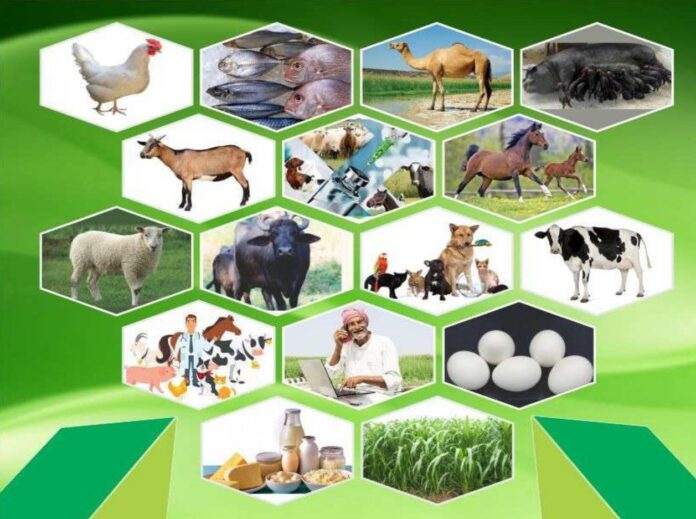Tips for Good Management Practices for cattle and Buffalo in India
India has huge livestock population with huge potential to support growth of Indian economy. Among many limiting factors in development of this sector is the fact that majority of livestock farmers are unaware about the package and practices to be implemented for maintaining good health to their animals. A good package and practices for maintaining health and productivity of livestock is required and awareness among animal farmers can bring revolutionary change in this sector. With this as objective, package and practices for different strategies for maintaining health and productivity of animals has been attempted and advised to be implemented under strict supervision of a veterinarian.
Package and practices for vaccination:
Routine Prophylactic schedule for Domestic animals
| Disease and animal | Vaccine | Dose and Method | Age and time of vaccination |
| FMD: Cattle, Buffalo, Sheep, Goat, Swine | FMD inactivated polyvalent vaccine | Cattle, Buffalo and Sheep: 2 ml Goat and Swine:
1 ml Method: IM route |
First dose at 4 month of age Booster: at 6 month of age Repeated every 6month interval Appropriate time: March-April and Sept.- October |
| PPR: Goat and sheep | Live attenuated PPR vaccine | Sheep and Goat:
1 ml Method: S/C route |
First Dose at 4 months of age Revaccinate once in 3 years Avoid vaccination in advance pregnancy |
| Rabies
In all species of domestic animal |
Inactivated cell culture vaccine | In all species: 1ml
Method: IM route |
Rabies vaccine in domestic animals is given only after bite from suspected rabid dog
Schedule: day 0 of the dog bite, 3rd day, 7th day, 14th day, 28th day, 90th day |
| Sheep and Goat Pox: Sheep and Goat | Sheep and Goat pox vaccine | Goat and Sheep:
0.3 gm triturated vaccine mixed with 30ml Glycerine for 100 animals. Method: S/C or IM route |
First dose at 3 months of age Booster repeated every year |
| Swine fever: Swine | Lapinized swine fever vaccine | Swine: 1ml
Method: IM route |
First Dose at 2 months interval Booster every year |
| Haemorrhagic speticemia: Cattle, Buffalo, Sheep, Goat and Swine | H.S oil adjuvant vaccine | Cattle and
Buffalo: 3ml Sheep, Goat, Swine and calves: 2 ml Method: IM or S/C route |
First dose at 4-6 months of age. Booster repeated every year preferably before rainy season (May-June) |
| Anthrax: All domestic animals | Anthrax live spore vaccine | Cattle, buffalo and horse: 1ml Swine, sheep and Goat: 0.5ml
Method: IM route |
First dose at 6 months of age Booster repeated every year preferably in the month of May to June |
| Black
Quarter: Cattle, buffalo, sheep and goat |
Polyvalent B Q vaccine | Cattle and
Buffalo: 5ml Sheep and Goat: 2-3ml Method: S/C route |
First Dose at 6 month of age Booster repeated every year, preferably before monsoon season |
| Brucellosis: Cattle and buffalo | Brucella
abortus Strain -19 live vaccine |
Cattle and Buffalo:Â 2ml Method: S/C route; Do not vaccinate male calves and
pregnant animals |
Single Dose at 4-8 months of age |
| Tetanus: All domestic animals | Tetanus toxoid vaccine | Cattle, buffalo and horse:Â 1500-3000 units Swine, sheep and goat: 500- | First Dose: First dose at 1 month of age Booster at 6 month interval. Pregnant cattle, buffalo and horse: 6-7 months of gestation Swine at 2-3 months of age
Pregnant Sheep, goat, swine at 3-4 months of gestation |
| 1500 units
Method: IM route |
|||
| Enterotoxemia: Sheep and Goat | Entertoxemia vaccine | Sheep and Goat: 3-5 ml
Method: S/C route |
2 doses of vaccine at 21 days interval and repeat annually with two doses of vaccine at 21 days interval |
| Equine Abortion: Horse | Salmonella abortus equi vaccine | Horse: first two doses 10 ml and third dose 20ml and to be repeated at 10 days interval
Method: IM route |
Booster every year |
Package and practices for control of endoparasite:
Deworming Schedule for livestock
| S
No |
Endoparasite | Name of parasite | Anthelmentic | Dose | Route | Remarks |
| 1 | Round worms | Ascaris | Piperazine (45mg/100ml) | 30ml for cattle, buffalo, horse, calves, sheep &
goats |
Oral | First dose to be given within 5― 6 days of birth Repeat at 45 days intervals. |
| Tetramisole | 15mg/kg body weight | Oral Single dose | ||||
| Morantel Citrate | 10mg/kg body weight | Oral | ||||
| Levamisole | 7.5 mg/kg body weight | Oral, once | ||||
| 2 | Flat (Fluke) | Liver fluke | Oxyclozanide | 10-15 mg/Kg body | Oral, | Deworm at 4-6 |
| Worms | Amphiostome | weight | once | month interval | ||
| Fenbendazole | 5-7.5 mg/Kg body weight | Oral, once | ||||
| Albendazole | 5-10 mg/kg body weight | Oral, once | ||||
| Tricalbebdazole | 10-12 mg/kg body weight | Oral, once | ||||
| Rafoxanide | 7.5mg/kg body weight | Oral | ||||
| 3 | Tape Worms | Cestodes | Dichlorophen | 0.5 mg/kg body weight | Oral | Deworm at 4-6 month interval |
| Albendazole | 5-10 mg/kg body weight | Oral, once | ||||
| Fenbendazole | 5-7.5 mg/kg body weight | Oral, once |
Package and practices for control of ectoparasite:
Diseases transmitted by ectoparasite
| S
No. |
Ectoparasite | Important disease Transmitted |
| 1 | Ticks | Babesiosis, Anaplasmosis, Theileriosis |
| 2 | Flies | Mastitis, Keratoconjunctivitis, Trypanosomiasis |
| 3 | Midges | Bluetongue, African Horse Sickness |
Common pesticides used for control of ectoparasite in animals:
| Pesticides | Uses | Doses |
| Cypermethrin 10% w/v | Ticks, lice, flies, mites, midges and keds | Dilute 1 ml to 2ml in 1 litre of water and apply on whole body as spray or bath Repeat after 15 days to kill the newly emerged larva and |
| adults from egg
**For Animal Houses: Dilution rate is 20ml/lit of water |
||
| Deltamethrin 12.5mg/ml | Tick, lice, mite, flies, keds, etc. | For Tick: Dilution rate 2-3 ml/Lit of water For Mites: 4-6ml/lit of water For Lice: 1-2ml/lit of water
For Fly: 2-3ml/lit of water |
| Amitraz 12.5% w/v | Tick, Fleas, Mange, lice | Dilute 2-4ml per lit of water and spray or wash all over the body. Repeat the application 3 times at 15 days interval |
| Ivermectin 1% w/v | Sarcoptic Mange | Dog: 0.2 ml/33 Kg body weight Pig: 1ml/33 Kg body weight Other Animals: 1ml/50 Kg body weight by s/c route |
Drug dose schedule for treatment and prevention:
| Drug | Treatment | Prevention |
| Amprolium Sulfaquinoxaline | 10 mg/kg/day for 5 days 13.2mg/kg/day(3-5days) | 5 mg/kg/day for 21 days |
Commonly used antibiotics in neonatal calves
| S No. | Drugs | Dose regime |
| 1 | Ampicillin Sodium | 5-10 mg/kg PO or IV every 12 hrs. |
| 2 | Ceftiofur Sodium | 10 mg/kg PO or IV every 12 hrs. |
| 3 | Enrofloxacin | 2.5-5 mg/kg PO or IV every 12-24 hrs. |
| 4 | Erythromycin | 2.2-4.4 mg/kg PO |
| 5 | Gentamicin | 4 mg/kg IM or IV every 12 hrs. |
| 6 | Trimethoprim-Sulfonamide | 15-30 mg/kg IV every 12 hrs. |
Commonly used antibiotics in neonatal foals
| S No. | Drugs | Dose regime |
| 1 | Amoxicillin trihydrate | 25 mg/kg PO every 6-8 hrs. |
| 2 | Amoxicillin-Clavulanate | 15-25 mg/kg IV every 6-8 hrs. |
| 3 | Ampicillin sodium | 10-20 mg/kg IV or IM every 6-8 hrs |
| 4 | Ceftiofur sodium | 10 mg/kg IV every 6-8 hrs. |
| 5 | Enrofloxacin | 5-7.5 mg/kg PO or IV every 12-24 hrs |
| 6 | Trimethoprim-Sulfonamide | 15-30 mg/kg IV every 12 hrs. |
Tips for Good Management Practices for cattle and Buffalo in India PDF CAN BE DOWNLOADED FROM HERE-

Tips for Good Management Practices for cattle and Buffalo in India


